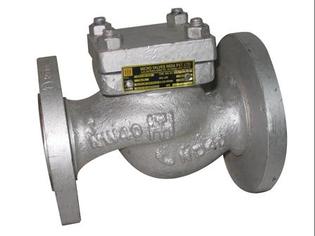 Hydronic heating is one of the oldest technologies of modern man, which is used for warming a home by circulating hot water or steam through a set of pipes to radiators that release the energy. While after a long time of use, you need to replace the radiator valve. So here are some tips on replacing in-home radiator valves.
More Instructions
1), Turn off the boiler and allow the system to cool. Once cooled, drain the water from the system.
2), Heat the union joint, which connects the valve to the unit, with a heat gun. This will assist in the loosening of the joint.
3), Turn the union joint with a pipe wrench until it is disconnected from the radiator.
4), Remove the valve from the supply pipe with the two pipe wrenches, using one to turn the valve and one to hold the pipe.
5), Remove the spud from from the radiator using the spud wrench. The spud is what connects the valve body to the radiator. Use a pipe wrench to turn the spud wrench. If the spud is tight, use the heat gun to expand the radiator and assist in its removal.
6), Clean the threads on the supply pipe and radiator using the wire brush. The paint on the radiator could contain lead so use necessary precautions to protect yourself.
7), Remove the new spud and nut from the new valve. Wrap the treads in thread sealing tape and apply a small amount of plumber's putty as well. Use the spud wrench and pipe wrench to install the new spud.
8), Apply tape and putty to supply pipe and thread on the new valve. Use the wrenches to tighten.
Next time when you face the same problem, you can use these tips to replace in-home radiator valves on your own.
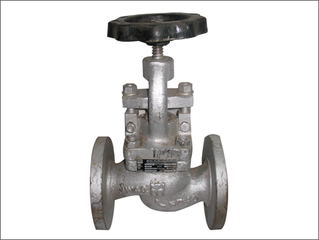 Steam radiators are important elements for our house especially in the cold weather. But after a long time of use, it will go out of work, causing leaks of the valve. So you need to know some basic knowledge about replacing a leaking steam radiator valve. Below are the tips for you.
More Instructions
1), Turn off the thermostat and allow the system to cool. Close the intake valve on the leaking radiator by turning the handle in a counterclockwise direction.
2), Remove the screw on top of the valve handle with a screwdriver; lift the handle off the valve assembly. Locate the packing nut at the bottom of the valve stem. Loosen the nut with a crescent wrench, turning counterclockwise. Remove the packing nut from the stem. Remove the old gasket and any other debris from inside the nut with the needle-nose pliers.
3), Wrap 3 to 4 inches of graphite valve packing loosely around the valve stem in a clockwise direction. Do not stretch or break it.
4), Replace the packing nut and tighten it by using the crescent wrench in a clockwise direction. When the nut is tight, it will compress the graphite packing into a new gasket. Replace the handle and the screw. Turn the handle in a clockwise direction to open the valve.
5), Turn on the thermostat to check if there is leaks.
Since you've got the basic knowledge about tips on replacing a leaking steam radiator valve, next time you can solve the problem on your own.
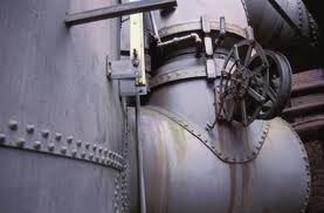 A safety relief valve is used to prevent the interior pressure of a heater from explosing or causing other dangerous situations. The size and design of a safety relief valve is important for industrial process safety. Here are some guidance for sizing a steam safety relief valve.
More Instructions
1), Decide all of the credible overpressure scenarios for a steam boiler. This will be the basis for the sizing of the valve. For example, in a natural gas boiler the gas burner could malfunction, causing excessive heat for boiling the water.
2), Decide the maximum steam generation capacity and the maximum pressure rating of the boiler. For example, assume the boiler has a maximum steam generation of 50,000 pounds per hour with a maximum pressure of 300 psi and a temperature of 422 degrees Fahrenheit.
3), Decide the minimum required orifice size of the valve using the formula from API 520. The formula is A = W/(C x Kd x P x Kb x Kc) x √(T x Z)/M where A is the orifice area in square inches, W is the steam generation, C is a steam coefficient equal to 330, P is the pressure, Kd, Kb and Kc are all constants equal to 1.0 in this case. T is the temperature of the steam, Z is the steam compressibility factor (assume it is 1.0) and M is the molecular weight of the steam, which is 18.01. This calculates out to be 2.44 square inches.
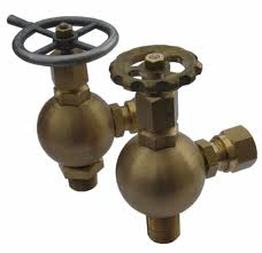 A steam relief valve is a tool used for releasing pressure from home applicances, such as a water heater to avoid dangerous explosions or other dangerous things to happen. Here are some tips on installing a steam relief valve.
More Instructions
1), Turn off your hot water heater before installing a steam valve. If you have an electric hot water heater, then simply involves unplugging it from the wall.
2), Turn off the main water source leading to the hot water heater.
3), Allow the hot water heater to sit for an hour, so that the steam inside of it cools completely.
4), Remove the steam relief valve that is installed on your water heater with the wrench. Turn the wrench counterclockwise to detach the steam relief valve.
5), Place a layer of sealant tape on the pipe threads of your new steam relief valve.
6), Screw the new valve onto the water heater with your hands.
7), Tighten the steam relief valve into place by turning it clockwise with the wrench.
8), Turn the new steam relief valve to the closed or off position. You can now reattach the water heater to its power or gas supply and turn on the water line leading into it.
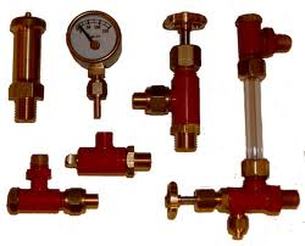 Steam valves are the common tools for our house and they are designed to release pressure. A steam valve is a special valve used for regulating the flow of the steam. Steam valves usually come in piprs or holes with flaps covering the opening. When there are too much stam accumulating in a machine, the flap will open and release some pressure. Steam valves are designed to release pressure in order to make sure the machine can function well. Since there are a variety of types of steam valve in the market, here will introduce you one type of steam valve which is commonly seen in our daily life.
Tea Kettles
You probably have a steam valve in your kitchen, in the form of a tea kettle. The opening from which you pour your tea functions as a steam valve. When you heat your water, some of it evaporates and expands. This causes pressure to build inside the kettle. The pressure needs to be released via the valve.
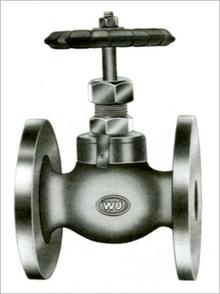 Steam valves are used to release pressure to make sure the safety of the home appliance. Since there are a varoety pf steam valves in our daily life, here will introduce you some famous steam valve for you to have a basic knowledge. Of course, the type of steam valves is not limited in the following ones and these are just for your reference.
Safety Valves
You can find a few steam valves on the engine of a locomotive. Steam locomotives work on the pressure created when water evaporates and expands into steam. Sometimes, the engines get too hot and too much steam is created, which will force the machinery of the train to run too fast. When this situation happens, the safety steam valve will help to release a bit of steam to make the pressure regulated for safety.
Pressure Valves
Steam engines also have pressure valves. The pressure valves release steam from a boiler, where the steam is first created by heating water, into another chamber where the steam is converted into energy.
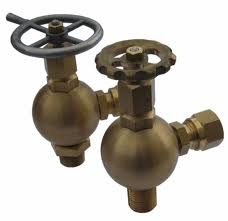 Before you go to buy a new steam valve, you should figure out what size of steam valve you need first. A steam valve is a tool that makes steam to escape from a source so as to decrease the build up of pressure. In most cases, steam valves are attached to water heaters, but are also applied in industrial settings. It's necessary for you to get the basic knowledge about the size of the valve before you want to repalce a faulty steam valve or install a new one, for valves come in a variety of sizes.
More Instructions
1), Mark the pipe that you plan to attach the steam valve to.
2), Hold the ruler up to the opening of the pipe, being sure that its beginning edge is matched with the outer surface of the pipe. Also, be sure that you are holding the ruler at the center of the pipe's diameter.
3), Mark where on the ruler the other other end of the pipe's outer edge is located. Read how many inches wide the pipe is. This is the size of steam valve you will need to purchase to install on this pipe.
Tips
In the U.S.the steam valves for most water heaters measure either 3/4 inch or 1 inch.
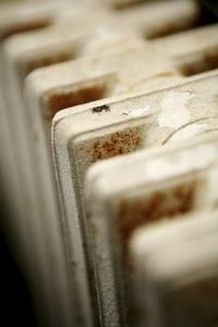 Steam radiators can provide latent heat to our home especially in the cold weather. The operating principle of steam radiator is to heat water to the point then it will convert into steam, which is distributed through the house via radiators. But after a long time use, the packing around the steam radiator will wear off, causing leaks of the valve. However, this problem can be easily solved by ourselves if you will follow the instructions below.
More Instructions
1), Turn off the thermostat and allow the system to cool. Close the intake valve on the leaking radiator by turning the handle in a counterclockwise direction.
2), Remove the screw on top of the valve handle with a screwdriver; lift the handle off the valve assembly. Locate the packing nut at the bottom of the valve stem. Loosen the nut with a crescent wrench, turning counterclockwise. Remove the packing nut from the stem. Remove the old gasket and any other debris from inside the nut with the needle-nose pliers.
3), Wrap 3 to 4 inches of graphite valve packing loosely around the valve stem in a clockwise direction. Do not stretch or break it.
4), Replace the packing nut and tighten it by using the crescent wrench in a clockwise direction. When the nut is tight, it will compress the graphite packing into a new gasket. Replace the handle and the screw. Turn the handle in a clockwise direction to open the valve.
5), Turn on the thermostat to check if there is leaks.

You can remove drain valves on radiators by using pliers. The flow of heated liquid can be offered to a room through steam and hot water radiators. The radiators work through a single pipe flowing into a valve that links to the radiator. The valve, connecting on both steam and hot water models, is used for controlling the flow of liquid in and out of the radiator. The valve makes the liquid to be forced into the radiator when it is on, and bypasses the radiator when it is off. It's simple to replace a valve on the radiator.
More Instructions
1), Switch the compression fittings or unions off. The connection, called a union or compression joint, is a nut on the pipe. Loose it then you can disconnect the two sections with no need to twist the pipe. Before you remove any of the pipes, you have to separate the union. The connection is linked to the radiator or to the valve coming form inlet pipe.
2), Separate the other connections to the valve. There are three pipes joined together in most valves. Two will be linked with unions or compression fittings, which you need to remove in Step one. Screw other pipes directly into the valve. Use pipe wrench to grip the pipe to make it stable when you are spinning the valve. Rotate the valve connection, which is like a hexagonal nut, conterclockwise by using pipe wrench.
3), Apply thread sealant to the threads of each pipe and fitting involved.
4), Attach the replacement valve in the opposite direction.
Tips
Apply some spray lubricant to the connections with rust and allow it to soak in to aid with the removal of the valve.
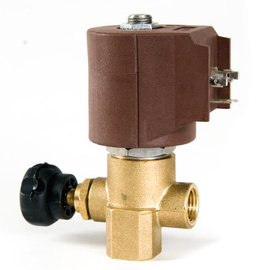 It's essential for steam boilers to equip with safety relief valves, which can prevent the interior pressure of a boiler from rising to unsafe levels. Typically, steam safety relief valves will own a large spring that will add a downward force on a metal piston. When the pressure in a steam boiler rises high enough, it will apply the force of the spring and the piston will lift to relieve the interior pressure outside. So it's important for industrial process safety to consider the design and size of a safety relief valve. The size should accord with the required minimum standard. You can turn to the American Petroleum Institute (API), specifically the Recommended Practice 520 to find out some tips for sizing procedures and formulas of steam valves.
More Instructions
1), Decide all of the possible overpressure scenes for a steam boiler. This is the basic thing for the sizing of the valve. For instance, in a natural gas boiler, it's possible for the gas burner to be out of work, making excess heat for boiling the water.
2), Decide the maximum steam generation capacity and the maximum pressure rating of the boiler. For example, suppose the boiler has a maximum steam generation of 50,000 pounds per hour with a maximum pressure of 300 psi and a temperature of 422 degrees Fahrenheit.
3), Use the formula from API 520 to decide the minimum required orifice size of the valve. The formula is A = W/(C x Kd x P x Kb x Kc) x √(T x Z)/M where A is the orifice area in square inches, W is the steam generation, C is a steam coefficient equal to 330, P is the pressure, Kd, Kb and Kc are all constants equal to 1.0 in this case. T is the temperature of the steam, Z is the steam compressibility factor (assume it is 1.0) and M is the molecular weight of the steam, which is 18.01. This calculates out to be 2.44 square inches.
|










 RSS Feed
RSS Feed